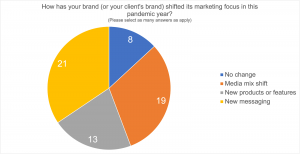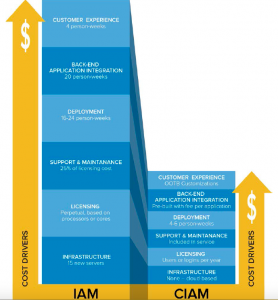May 12, 2016
We have now entered the subjective zone.
You already know how to setup an account. (If you don’t, go here.) But now you want to know if an account looks good. You may want to know to decide if you’ll follow them, hire them, or do business with them.
Good is subjective.
What’s good to you? I’ll tell you what I look for in accounts in this post with setup and engagement.
Setup
So, your bio should make sense. What is it that you do? Does your 96-year-old grandmother understand it?
Your account should have a header, a clear photo, a website, and a bio. This should happen before you start following people. As a bonus, I also look to see if you’ve created lists.

@Carol_Stephen’s Twitter Header
Here’s Carol Stephen’s Twitter profile. She’s got a very healthy setup and has been a user since 2009.
Highlights.
- She has a header photo that is relevant. It’s the baseball diamond for the SF Giants. She’s in the Bay Area.
- Her photo is recognizable even on mobile. At least half of Twitter users are on mobile and there your Twitter avatar is about 1 cm squared. That’s pretty small.
- Her bio makes sense. It tells you something about her hobbies and her business. (She is a gym mouse and a conscious soul.) But also, she blogs for startups (what she does). Bonus points for her Pinterest Link and Twitter Chat info.
- Location is filled in and makes sense. It’s not vague or a GPS number. Seriously, stop it.
- Link is her website.
- She follows almost 15,000 people and has 20,000 followers. This is good. Personally, I aim for a 1:1 ratio because Twitter is one of the only social networks that enforces following/follower ratios.
- She has lists.
- Bonus points for a pinned tweet of her latest blog post.
Here is an example from a business account, my friends at Blue Steele Solutions:

Great business Twitter account by Blue Steele Solutions.
- The header photo is branded and matches their website.
- They are using a square version of their logo–the image of which is reinforced on their header photo and, of course, website.
- Their bio tells you they are marketers who build WordPress sites and specialize in Genesis. Bonus points for identifying the primary person who tweets: Adam.
- Location is accurate.
- Link is her website.
- They follow 2,132 and have 2,166 followers. This is great for a newer account like theirs. (Seriously, the first 1,000 followers are the hardest. I’d aim for growth near 1,000 a year if you spend two hours a day.)
- They have lists.
- Bonus points for a relevant (WordCamp is a WordPress event) pinned tweet.
Why does following matter?
Social media is about connection and engagement. If you’re only following 30 people, it tells me you don’t know how to use lists. It tells me that you don’t think followers are valuable to you.
Now, some people are going to be offended and say they don’t like people “cluttering their feed.” But this is my post and I believe this with all of my heart. Feel free to disagree. It’s a free country.
More about your bio here:
Vanity Metrics:
This is where we talk about vanity metrics. That is, x amount of followers as social proof. Does it matter?
This is a “it depends” territory. If you’re a self-professed social media guru with less than 1,000 followers and you’ve been on Twitter since 2007, maybe I don’t believe it. And I get the whole, “a cobbler’s children have no shoes” axiom. I mean, I haven’t blogged here in a month. I get it. The day job tends to take away all of our attention.
To me, the ratio and engagement say more about whether they’re good at social. So, that’s my segue.
Engagement:
If vanity metrics are only a shadow of social proof, then the actual proof is in the eating — I mean tweeting.
I like to see a good mix of tweets, retweets, and replies. I call this granola.
If you only have oats in your granola, it’s just uncooked oatmeal. A good granola needs nuts, oats, and probably carob chips. A healthy mix. Or take salad if you like that better. Iceberg lettuce does not a salad make. You at least need carrots and tomatoes. And do you have to beg for croutons? Come on. But I digress.To audit an account (yours, for example) look at the Tweets and Replies Tab. For Carol, this would be here.
Recommended for YouWebcast: The 5 Experiments You Need to Find Product-Market Fit
Note: on mobile, all of the tweets, saved the pinned tweet, are mixed together. This is why I think it’s even more important to have a healthy mix.
She’s replying to people, sharing her own content, sharing other’s content, and retweeting (bonus points for old school retweet, too).
Here are some screenshots.

This shows social behavior: replies indicate conversations.

Sharing other’s posts and old school retweets show a healthy account.
Another metric of Engagement: Response Time
If you tweet someone and they respond six months later, I’d say that’s not a healthy account. Now, that’s not obvious from a cursory (visual) audit. Let it be a cautionary tale. Social Media Managers may come and go (are you paying them enough?) but it’s your account, company, brand. You should care the most.
No one can care more about your account than you. My friend Robert Nissenbaum even goes as far as to say that outsourcing your social isn’t authentic. On this we disagree, but he’s partially right. That person should be you or your brand.
A Postscript about Being on Brand:
Some people think that replies and retweets are off-brand.
Firstly, I’d say that it’s rarely true.
Secondly, I’d say that you should follow parallel industries. For contractors, follow real estate brokers and local businesses. For social media managers, follow website developers. For WordPress plugin authors follow developers and businesses that would use your plugin. You get it.
Showing more than one dimension is not only a demonstration that you “get social media” but it’s social.
Have you ever gone out to dinner with someone who wouldn’t shut up about themselves? How often do you repeat that?
All of our conversation shouldn’t be “on brand.” It should be human. That’s how we build relationships.
Bottom line:
Fill out your bio.
Tweet your own content on a regular basis.
Spend time replying to people.
Retweet other people. Share their content.
Respond to tweets. Thank people who share your content.
Be a polite, human being. That’s never off-brand.
(66)








